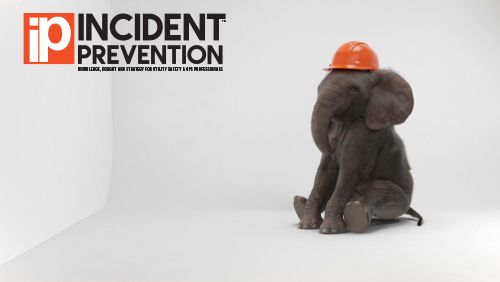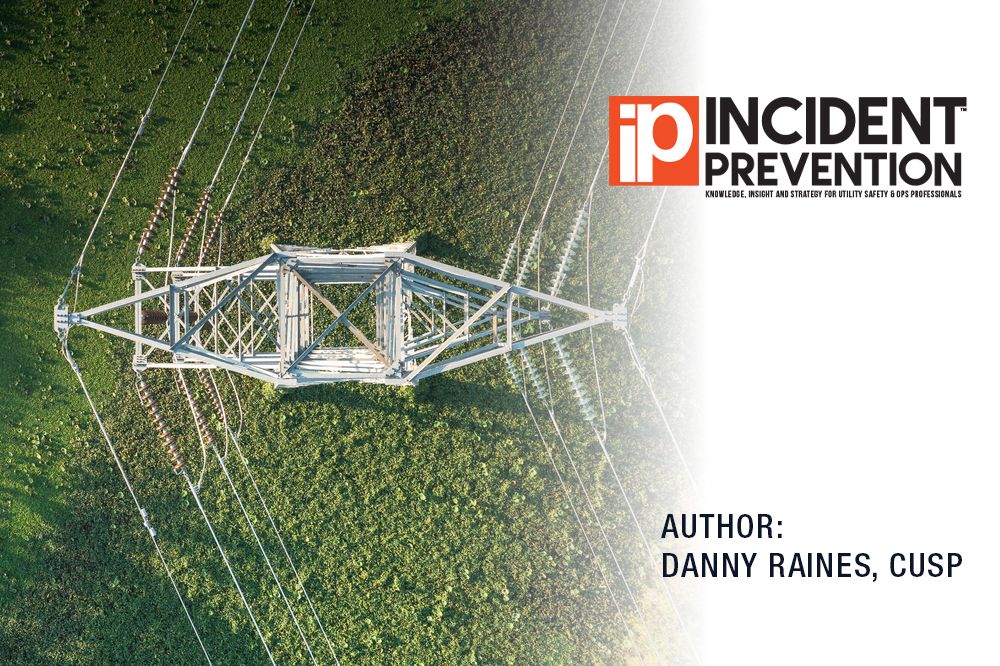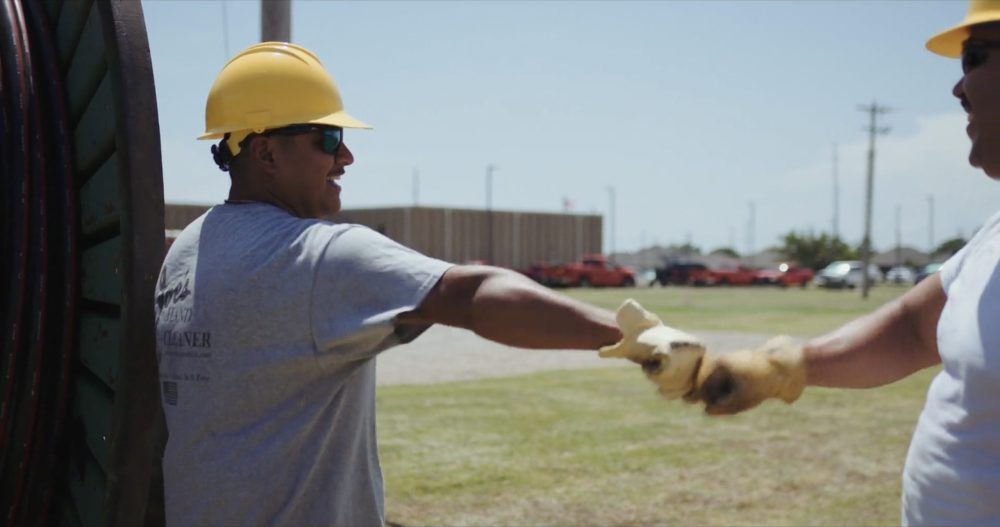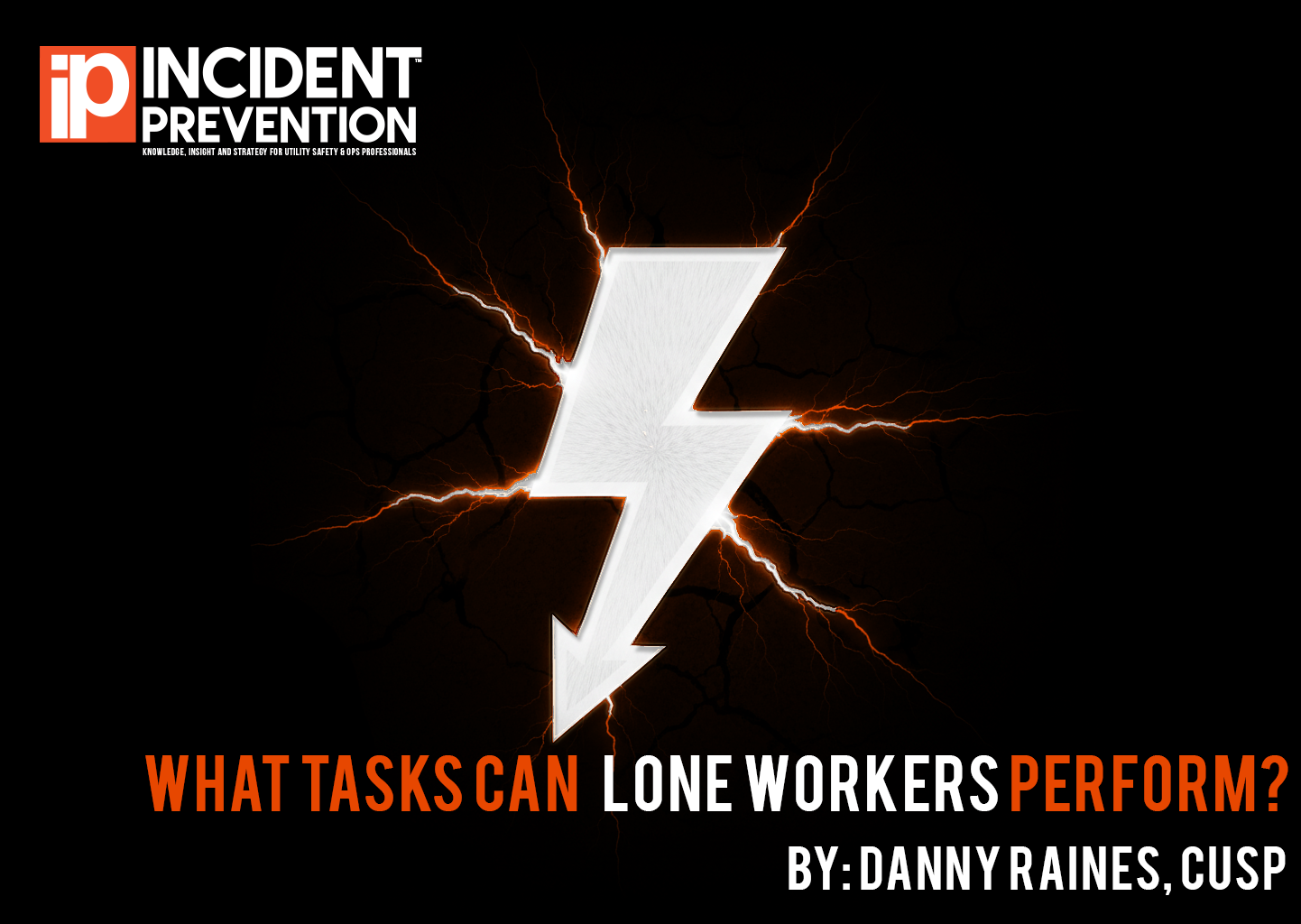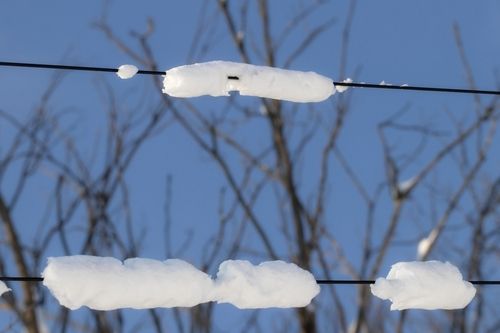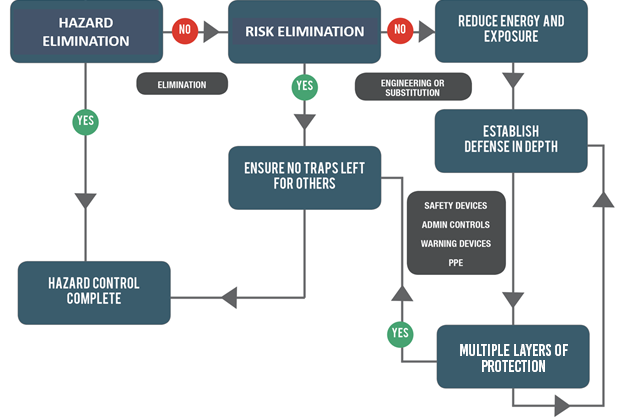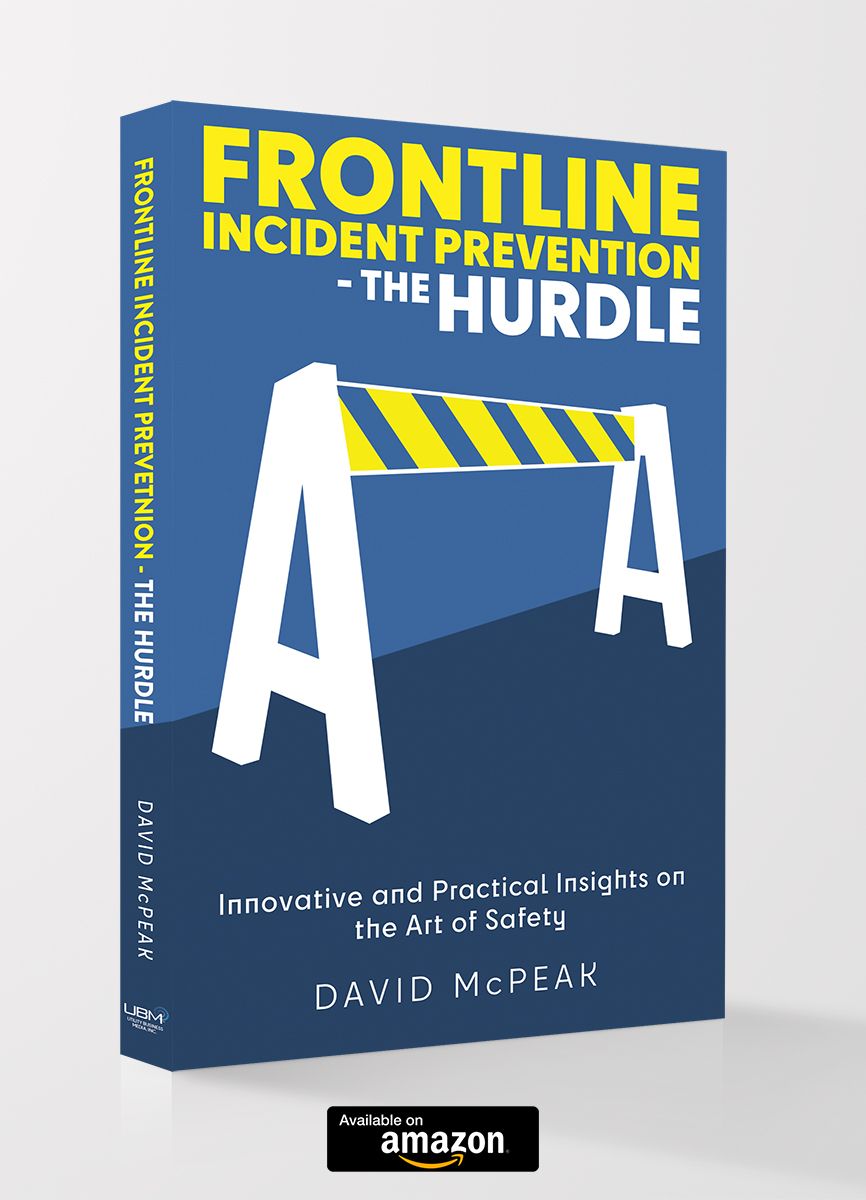Tag: Current
Addressing the Elephant in the Room
Written by Jim Vaughn, CUSP on . Posted in Train the Trainer 101.
Accuracy Above All: Authoring Articles for iP Magazine
Written by Danny Raines, CUSP on . Posted in Voice of Experience.
October-November 2025 Q&A
Written by Jim Vaughn, CUSP on . Posted in Q & A, Grounding.
Verbal and Physical Triggers
Written by David McPeak, CUSP, CIT, CHST, CSP, CSSM on . Posted in Frontline Fundamentals.
Safety By Design: Human and Organizational Performance
Written by Pam Tompkins, CSP, CUSP on . Posted in Safety by Design, Safety Management.
Clearing Up Confusion About Host-Contractor Relationships
Written by Danny Raines, CUSP on . Posted in Voice of Experience.
August-September 2025 Q&A
Written by Jim Vaughn, CUSP on . Posted in Q & A.
Your Response Matters … A Lot
Written by David McPeak, CUSP, CIT, CHST, CSP, CSSM on . Posted in Frontline Fundamentals.
Safety By Design: Safety Management System Planning
Written by Pam Tompkins, CSP, CUSP on . Posted in Safety by Design, Safety Management.
OSHA-Compliant Employee Training
Written by Jim Vaughn, CUSP on . Posted in Train the Trainer 101.
Bucket Truck Safety: OSHA Standards and Other Considerations
Written by Danny Raines, CUSP on . Posted in Voice of Experience.
June-July 2025 Q&A
Written by Jim Vaughn, CUSP on . Posted in Q & A.
Prioritize Safety Now So It Becomes a Value Before It’s Too Late
Written by David McPeak, CUSP, CIT, CHST, CSP, CSSM on . Posted in Frontline Fundamentals.
Safety By Design: Leadership and Employee Involvement
Written by Pam Tompkins, CSP, CUSP on . Posted in Safety by Design, Safety Management.
Equipotential Grounding is the Law
Written by Jim Vaughn, CUSP on . Posted in Train the Trainer 101.
A Checkup from the Neck Up
Written by Danny Raines, CUSP on . Posted in Voice of Experience.
April-May 2025 Q&A
Written by Jim Vaughn, CUSP on . Posted in Q & A.
The Good Shepherd
Written by David McPeak, CUSP, CIT, CHST, CSP, CSSM on . Posted in Frontline Fundamentals.
Safety By Design: A System Approach to Organizational Safety Initiatives
Written by Pam Tompkins, CSP, CUSP on . Posted in Safety by Design, Safety Management.
Rubber Gloves and Chronic Injuries: Are Your Workers at Risk?
Written by Jim Vaughn, CUSP, and Alfred Sundqvist, D.C. on . Posted in Train the Trainer 101.
To Improve On-the-Job Safety, Consistency and Continuing Education are Key
Written by Danny Raines, CUSP on . Posted in Voice of Experience.
Bad Attitudes and How to Handle Them
Written by David McPeak, CUSP, CIT, CHST, CSP, CSSM on . Posted in Frontline Fundamentals.
A Three-Tiered Approach to Securing Buy-In for Safety Initiatives
Written by Kevin Rindal, D.C. on . Posted in Safety Management.
Win and Win Again: The Blueprint for Repeating Safety Successes
Written by David McPeak, CUSP, CIT, CHST, CSP, CSSM on . Posted in Frontline Fundamentals.
December 2024-January 2025 Q&A
Written by Jim Vaughn, CUSP on . Posted in Q & A.
Don’t Do This: Lessons Learned in the Field
Written by Danny Raines, CUSP on . Posted in Voice of Experience.
Are Your Employees 1910.269(a)(2) Qualified?
Written by Jim Vaughn, CUSP on . Posted in Train the Trainer 101.
Make It Safe To …
Written by David McPeak, CUSP, CIT, CHST, CSP, CSSM on . Posted in Frontline Fundamentals.
October-November 2024 Q&A
Written by Jim Vaughn, CUSP on . Posted in Q & A.
The Meter Base Checkout Procedure
Written by Danny Raines, CUSP on . Posted in Voice of Experience.
Trailers, Brakes and Common Usage Errors
Written by Jim Vaughn, CUSP on . Posted in Train the Trainer 101.
What Tasks Can Lone Workers Perform?
Written by Danny Raines, CUSP on . Posted in Voice of Experience.
Grounding for Stringing in Energized Environments
Written by Jim Vaughn, CUSP on . Posted in Train the Trainer 101.
August-September 2024 Q&A
Written by Jim Vaughn, CUSP on . Posted in Q & A.
Preventing SIFs with Above-the-Line Work Planning and Execution
Written by David McPeak, CUSP, CIT, CHST, CSP, CSSM on . Posted in Frontline Fundamentals.
Apprentice Development Programs: What Should be Included?
Written by Danny Raines, CUSP on . Posted in Voice of Experience.
Don’t Abuse OSHA’s Digger Derrick Exemption
Written by Jim Vaughn, CUSP on . Posted in Train the Trainer 101.
June – July 2024 Q&A
Written by Jim Vaughn, CUSP on . Posted in Q & A.
START Work Authority
Written by David McPeak, CUSP, CIT, CHST, CSP, CSSM on . Posted in Frontline Fundamentals.
Receiving Feedback
Written by David McPeak, CUSP, CIT, CHST, CSP, CSSM on . Posted in Frontline Fundamentals.
April – May 2024 Q&A
Written by Jim Vaughn, CUSP on . Posted in Q & A.
Ruling Spans and Proper Conductor Sag
Written by Danny Raines, CUSP on . Posted in Voice of Experience.
Switching and Tagging
Written by Jim Vaughn, CUSP on . Posted in Train the Trainer 101.
February – March 2024 Q&A
Written by Jim Vaughn, CUSP on . Posted in Q & A.
Game-Planning for Safety
Written by David McPeak, CUSP, CIT, CHST, CSP, CSSM on . Posted in Frontline Fundamentals.
What’s Missing in Your Training?
Written by Jim Vaughn, CUSP on . Posted in Train the Trainer 101.
Determining Reasonable Energy Estimates
Written by Danny Raines, CUSP, and Zarheer Jooma on . Posted in Voice of Experience.
The Art of Safety – A New Hierarchy
Written by David McPeak, CUSP, CIT, CHST, CSP, CSSM on . Posted in Frontline Fundamentals.
December 2023-January 2024 Q&A
Written by Jim Vaughn, CUSP on . Posted in Q & A.
Safety Signs and the Importance of Training
Written by Jim Vaughn, CUSP on . Posted in Train the Trainer 101.
Understanding and Preventing Ferroresonance
Written by Danny Raines, CUSP on . Posted in Voice of Experience.
October-November 2023 Q&A
Written by Jim Vaughn, CUSP on . Posted in Q & A.
Be Prepared for the ‘Big One’
Written by Jim Vaughn, CUSP on . Posted in Train the Trainer 101.
Understanding Task-Specific Training
Written by Danny Raines, CUSP on . Posted in Voice of Experience.
The Art of Safety: Self-Reliance
Written by David McPeak, CUSP, CIT, CHST, CSP, CSSM on . Posted in Safety Management, Frontline Fundamentals.
August-September 2023 Q&A
Written by Jim Vaughn, CUSP on . Posted in Q & A.
The End of the Pin-On Man Basket
Written by Jim Vaughn, CUSP on . Posted in Train the Trainer 101.
Equipotential or Total Isolation?
Written by Danny Raines, CUSP on . Posted in Voice of Experience.
Lineworkers and Rubber Sleeves
Written by Danny Raines, CUSP on . Posted in Voice of Experience.
June-July 2023 Q&A
Written by Jim Vaughn, CUSP on . Posted in Q & A.
The Art of Safety: Protect the Worker
Written by David McPeak, CUSP, CIT, CHST, CSP, CSSM on . Posted in Frontline Fundamentals.
Training Users of Aerial Lifts
Written by Jim Vaughn, CUSP on . Posted in Train the Trainer 101.
Planning for Storm Work
Written by Danny Raines, CUSP on . Posted in Voice of Experience.
ATVs and UTVs: Minimizing the Hazards
Written by Jim Vaughn, CUSP on . Posted in Train the Trainer 101.
Substations
Written by Matt Edmonds, CUSP, CIT, CHST, and Pam Tompkins, CSP, CUSP on . Posted in OSHA Articles.
The Art of Safety: Lead People, Not Robots
Written by David McPeak, CUSP, CIT, CHST, CSP, CSSM on . Posted in Frontline Fundamentals.
The Art of Safety: C5 Leadership
Written by David McPeak, CUSP, CIT, CHST, CSP, CSSM on . Posted in Frontline Fundamentals.
Arc Flash Precautions: A Review
Written by Danny Raines, CUSP on . Posted in Voice of Experience.
Testing and Test Facilities
Written by Matt Edmonds, CUSP, CIT, CHST, and Pam Tompkins, CSP, CUSP on . Posted in OSHA Articles.
Opening a Can of Worms
Written by Jim Vaughn, CUSP on . Posted in Train the Trainer 101.
Ground Gradient Step Potential and PPE
Written by Danny Raines, CUSP on . Posted in Voice of Experience.
Electrical Protective Equipment and Live-Line Tools
Written by Matt Edmonds, CUSP, CIT, CHST, and Pam Tompkins, CSP, CUSP on . Posted in OSHA Articles.
From My Bookshelf to Yours: ‘Who Moved My Cheese?’
Written by David McPeak, CUSP, CIT, CHST, CSP, CSSM on . Posted in Frontline Fundamentals.
OSHA Electric Power Standards – Simplified
Written by Matt Edmonds, CUSP, CIT, CHST, and Pam Tompkins, CSP, CUSP on . Posted in OSHA Articles.
The Importance of Proper Coverup: Two Real-Life Tales
Written by Danny Raines, CUSP on . Posted in Voice of Experience.
From My Bookshelf to Yours: ‘No Compromise’
Written by David McPeak, CUSP, CIT, CHST, CSP, CSSM on . Posted in Frontline Fundamentals.
The Skinny on Confined Spaces
Written by Jim Vaughn, CUSP on . Posted in Train the Trainer 101.
Mechanical Equipment Rules for Qualified Workers
Written by Matt Edmonds, CUSP, CIT, CHST, and Pam Tompkins, CSP, CUSP on . Posted in OSHA Articles.
August – September 2022 Q&A
Written by Jim Vaughn, CUSP on . Posted in Q & A.
From My Bookshelf to Yours: ‘The 8 Habits of a Highly Effective Safety Culture’
Written by David McPeak, CUSP, CIT, CHST, CSP, CSSM on . Posted in Frontline Fundamentals.
June – July 2022 Q&A
Written by Jim Vaughn, CUSP on . Posted in Worksite Safety, Q & A.
OSHA Electric Power Standards – Simplified
Written by Matt Edmonds, CUSP, CIT, CHST, and Pam Tompkins, CSP, CUSP on . Posted in OSHA Articles.
Traffic Cones and Flashing Lights
Written by Jim Vaughn, CUSP on . Posted in Train the Trainer 101.
From My Bookshelf to Yours: ‘The Success Principles’
Written by David McPeak, CUSP, CIT, CHST, CSP, CSSM on . Posted in Leadership Development, Frontline Fundamentals.
A Close Look at Step and Touch Potentials
Written by Jim Vaughn, CUSP on . Posted in Worksite Safety, Train the Trainer 101.
February – March 2022 Q&A
Written by Jim Vaughn, CUSP on . Posted in Worksite Safety, Q & A.
From My Bookshelf to Yours: ‘Extreme Ownership’
Written by David McPeak, CUSP, CIT, CHST, CSP, CSSM on . Posted in Leadership Development, Frontline Fundamentals.
The End of a Career
Written by Danny Raines, CUSP on . Posted in Voice of Experience.
Safety Signs and Sign Policy
Written by Jim Vaughn, CUSP on . Posted in Worksite Safety, Train the Trainer 101.
Containing Contagions in Close Quarters
Written by Jim Vaughn, CUSP on . Posted in Worksite Safety, Train the Trainer 101.
Installing Fiber-Optic Cable in Electric Supply Spaces
Written by Danny Raines, CUSP on . Posted in Voice of Experience.



